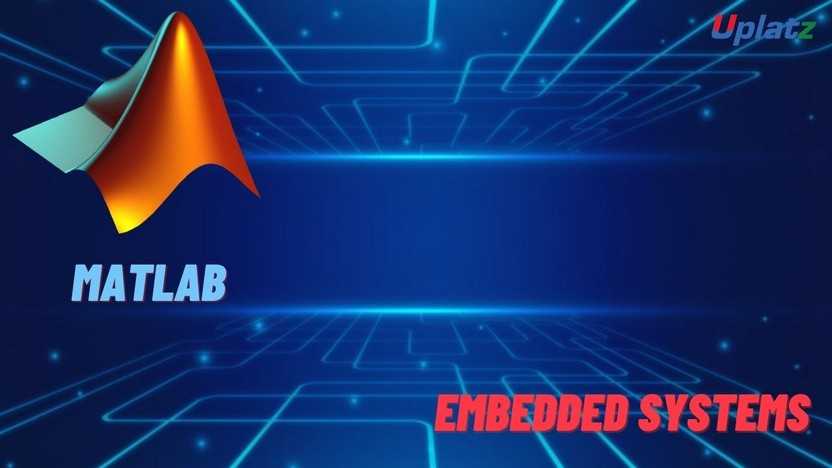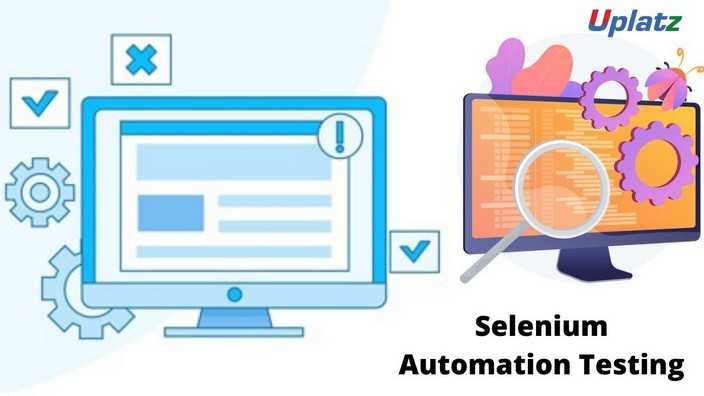Legacy Embedded Systems
Learn about the whole embedded Design Flow within the Embedded Systems framework.Preview Legacy Embedded Systems course
Price Match Guarantee Full Lifetime Access Access on any Device Technical Support Secure Checkout Course Completion Certificate 83% Started a new career
BUY THIS COURSE (
83% Started a new career
BUY THIS COURSE (USD 17 USD 41 )-
 89% Got a pay increase and promotion
89% Got a pay increase and promotion
Students also bought -
-

- Embedded Systems and MATLAB Programming
- 30 Hours
- USD 17
- 1501 Learners
-

- Software Testing (Automation Testing with Selenium)
- 30 Hours
- USD 17
- 2519 Learners
-

- Software Testing (Manual Testing)
- 30 Hours
- USD 17
- 1554 Learners

Legacy embedded systems are described as hardware and software/firmware systems that have traditionally performed important functions but now require reengineering and upgrades for apparent reasons. Parts obsolescence, as well as current system needs such as increased functionality, integration with other contemporary systems or sub-systems, increased processing and interface scalability, better physical characteristics, and lower maintenance and life-cycle support costs, are the most important drivers of this change. Another important factor is the availability of contemporary algorithms, architectures, and technologies that meet or surpass the requirements of the system.
A legacy system is still in use computer software and/or hardware that is more than ten years old. The system still fulfils the requirements for which it was created, but it does not allow for expansion. A legacy system will only ever do what it does today for the firm. The outdated technology of a legacy system prevents it from interacting with modern systems.
As technology progresses, most businesses are forced to cope with problems generated by old systems. A legacy system keeps a firm in a business rut by not providing them with the most up-to-date capabilities and services, such as cloud computing and improved data integration. The term "paradigm shift" in embedded systems refers to a significant shift in thinking and planning that affects the way projects are performed. Accessing apps and data over the Web rather than local servers, for example, is a paradigm shift.
Simple hardware improvements, typically at the single-chip level, are the focus of current reengineering. This one-component-at-a-time strategy does not include reengineering at the board or subsystem level, nor does it include a software upgrade. For some historical systems, for example, a single, form-efficient IC might replace several old chips all at once; resulting in significant performance and/or cost savings, and therefore a board-level approach would be quite useful. Many times, we don't have design specifications for the legacy system, and the original designers aren't available to help.
Design, development, and integration of embedded systems are developing as organizations face greater pressure to innovate quicker than ever before. Legacy systems that were originally purpose-built must be updated or new fluid and linked systems must be implemented. Naturally, the necessity for this shift, as well as its actual execution, does not occur overnight.
This Uplatz course will teach you about Legacy Embedded Systems and the current paradigm change in Embedded Systems and Engineering. Learn about the whole embedded offering as well as the Design Flow within the Embedded Systems framework.
Course/Topic - Legacy Embedded Systems - all lectures
-
In this lecture session we learn that Legacy Embedded Systems can be defined as the hardware and software/firmware systems performing useful tasks traditionally but requiring reengineering and upgrades due to obvious reasons.
-
In this lecture session we learn about hardware in power plants, manufacturing machines controlled by computers running MS-DOS, or outdated financial systems. In reality, however, legacy applications still power important business processes in plenty of other companies around the world.
-
In this lecture session we learn about a legacy platform. Also called a legacy operating system, legacy platform is an operating system (OS) that is no longer in widespread use, or that has been supplanted by an updated version of earlier technology.
-
In this lecture session we learn about Legacy technologies which are essentially systems, technologies, software, or hardware that are outdated or obsolete. Often, legacy technologies are vital technologies, used in multiple processes and interdepartmental in an organization.
-
In this lecture session we learn that an embedded system is designed to perform one function with real-time applications. Embedded systems are found in simple devices like calculators, microwave & television remote controls, and also in more complicated devices such as home security and neighborhood traffic control systems.
-
In this tutorial we learn that Embedded Portfolio is written specifically for the particular hardware that it runs on and usually has processing and memory constraints because of the device's limited computing capabilities.
-
In this lecture session we learn how to fix (an object) firmly and deeply in a surrounding mass. It means that the system is part of a larger product (or system). For example virtually all modern vehicles have an Electronic Engine Controller (EEC).
After successful completion of this course you will be able to:
• To have knowledge about the basic working of a microcontroller system and its programming in assembly language.
• To provide experience to integrate hardware and software for microcontroller applications systems.
• To acquire knowledge about microcontrollers embedded processors and their applications.
• Foster ability to understand the internal architecture and interfacing of different peripheral devices with Microcontrollers.
• Foster ability to write the programs for microcontroller.
• Foster ability to understand the role of embedded systems in industry.
• Foster ability to understand the design concept of embedded systems.
-
Introduction to Legacy Embedded Systems
-
Embedded Systems Paradigm Shift
-
Embedded Portfolio
-
Embedded System Design Flow
The Legacy Embedded Systems and Paradigm Shift in ES Certification ensures you know planning, production and measurement techniques needed to stand out from the competition.
A warm welcome to the "Legacy Embedded Systems & Paradigm Shift in Embedded Systems" course by Uplatz. Legacy Embedded Systems can be defined as the hardware and software/firmware systems performing useful tasks traditionally but requiring reengineering and upgrades due to obvious reasons.
An embedded system is a microcontroller or microprocessor based system which is designed to perform a specific task. For example, a fire alarm is an embedded system; it will sense only smoke. An embedded system has three components − It has hardware.
embedded processor, a class of computer, or computer chip, embedded in various machines. These are small computers that use simple microprocessors to control electrical and mechanical functions.
New trends in embedded electronics will change how electronics are programmed and increase the impact of machine learning in technology. The global embedded systems market will grow exponentially in the coming years, reaching more than $130 billion yearly by 2027
Embedded engineers are currently in high demand. That means you can expect a more than reasonable salary. According to Glassdoor, the average yearly salary for an embedded engineer in the United States is around 83,000 USD.
Uplatz online training guarantees the participants to successfully go through the Legacy Embedded Systems and Paradigm Shift in ES Certification provided by Uplatz. Uplatz provides appropriate teaching and expertise training to equip the participants for implementing the learnt concepts in an organization.
Course Completion Certificate will be awarded by Uplatz upon successful completion of the Legacy Embedded Systems and Paradigm Shift in ES online course.
The Legacy Embedded Systems and Paradigm Shift in ES draws an average salary of $83,000 per year depending on their knowledge and hands-on experience.
Marketing & Sales Executive. There is no doubt that initial packages are not very high but once you obtain experience of 3-4 years, you will get attractive packages. And experienced embedded system developers have extremely high demand in India. So, join embedded systems online training and pave your way to success.
The global embedded systems market will grow exponentially in the coming years, reaching more than $130 billion yearly by 2027. The increase in embedded electronics has led to new design software and strategies specific to those systems
Note that salaries are generally higher at large companies rather than small ones. Your salary will also differ based on the market you work in.
Technical Consultant(Embedded).
Computer Vision Embedded Engineer.
ELECTRONIC SYSTEMS PRODUCT SPECIALIST.
1) Explain what is embedded system in a computer system?
An embedded system is a computer system that is part of a larger system or machine. It is a system with a dedicated function within a larger electrical or mechanical system.
2) Mention what are the essential components of embedded system?
Essential components of embedded system includes
· Hardware
· Processor
· Memory
· Timers
· I/O circuits
· System application specific circuits
· Software
· It ensures the availability of System Memory
· It checks the Processor Speed availability
· The need to limit power lost when running the system continuously
· Real Time Operating System
· It runs a process as per scheduling and do the switching from one process to another
3) Mention how I/O devices are classified for embedded system?
The I/O devices of embedded system are classified into two categories
· Serial
· Parallel
|
Serial |
Input |
Output |
|
· Synchronous : |
Audio/Video signal |
Audio/Video signal |
|
· Asynchronous : |
Keypad, Mouse, Modem |
Printer, Modem |
|
Parallel |
Input |
Output |
|
· Single bit : |
Rotation, Threshold sensors |
Pulses to external circuit |
|
· Multi bit : |
Vp from ADC, sensors |
LCD, Printer |
4) Why embedded system is useful?
With embedded system, it is possible to replace dozens or even more of hardware logic gates, input buffers, timing circuits, output drivers, etc. with a relatively cheap microprocessor.
5) Explain what are real-time embedded systems?
Real-time embedded systems are computer systems that monitor, respond or control an external environment. This environment is connected to the computer system through actuators, sensors, and other input-output interfaces.
6) Explain what is microcontroller?
The microcontroller is a self-contained system with peripherals, memory and a processor that can be used as embedded system.
7) Mention what is the difference between microprocessor and microcontroller?
Microprocessor is managers of the resources (I/O, memory) which lie outside of its architecture
Microcontroller have I/O, memory, etc. built into it and specifically designed for control
8) What does DMA address will deal with?
DMA address deals with physical addresses. It is a device which directly drives the data and address bus during data transfer. So, it is purely physical address.
9) Explain what is interrupt latency? How can you reduce it?
Interrupt latency is a time taken to return from the interrupt service routine post handling a specific interrupt. By writing minor ISR routines, interrupt latency can be reduced.
10) Mention what are buses used for communication in embedded system?
For embedded system, the buses used for communication includes
· I2C: It is used for communication between multiple ICs
· CAN: It is used in automobiles with centrally controlled network
· USB: It is used for communication between CPU and devices like mouse, etc.
While ISA, EISA, PCI are standard buses for parallel communication used in PCs, computer network devices, etc.









